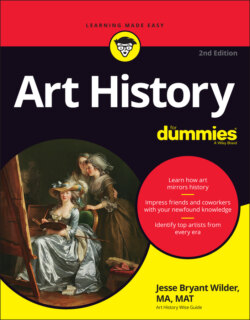Читать книгу Art History For Dummies - Jesse Bryant Wilder - Страница 70
FEATHERS, FUR, AND CHEWED STICKS: PREHISTORIC ART TOOLS
ОглавлениеCave artists used feathers, fur, moss, chewed sticks, and their fingers as paintbrushes. Sometimes they incised (cut into) the outlines of pictures into cave walls with sharp stones or charcoal sticks. They ground minerals like red and yellow ochre, manganese, and hematite into red, violet, yellow, brown, and black powders, which they applied directly to the damp limestone walls to create painted fur for bears and bison, and spots for leopards and hyenas. Today, 15,000 to 25,000 years later, this primitive paint still hasn’t peeled! (Don’t you wish you could find stuff like that at the local hardware store.)
Prehistoric artists also “spray-painted” their pictures to cover larger areas more efficiently by blowing colored powders through hollowed-out reeds or bones. Some of these hollow tubes have been discovered in the caves with traces of color still in them.
Cave painters sometimes used bumps and crevices on cave walls to emphasize an animal’s contours: a bulge for a belly, an indentation for an eye, a bump for a hump. In the Chauvet cave in southwestern France, an artist painted a bear’s paw over a knob in the wall, making it appear more threatening, as if the animal were reaching into real space to claw somebody!
Ten thousand years later, artists at the cave in Altamira, Spain, used the same technique. They painted the burly bodies of bison over swellings on the cave’s ceiling, giving the herd a sculpted, three-dimensional look.
